New, highly detailed images of the artificial islands China has built in the South China Sea have emerged. They show the intricacies of the radar installations, airfields, and naval gun emplacements, among buildings and other structures, located there.
Captured by photographer Ezra Acayan flying in an aircraft near the man-made fortresses in the Spratly Islands, the images are some of the most detailed yet available of what China is up to there and they give a totally new perspective compared to the daily satellite images we see of these locations.
Close-ups of one island in Cuarteron Reef show naval gun emplacements on a series of towers of increasing height, backed by a radar gunnery director. Atop the battlement-like setup is a large radome. The radar’s elevated position would give it a better line of sight over the horizon. These types of weapons installation have been something of a staple at these island outposts. In this case, it looks to host Type 730/1130 close-in weapon system (CIWS) and a H/PJ76 76mm multi-purpose deck gun. These would provide highly-localized defense against low-flying air threats, like cruise missiles, aircraft, and drones, as well as protection against vessels near the island.

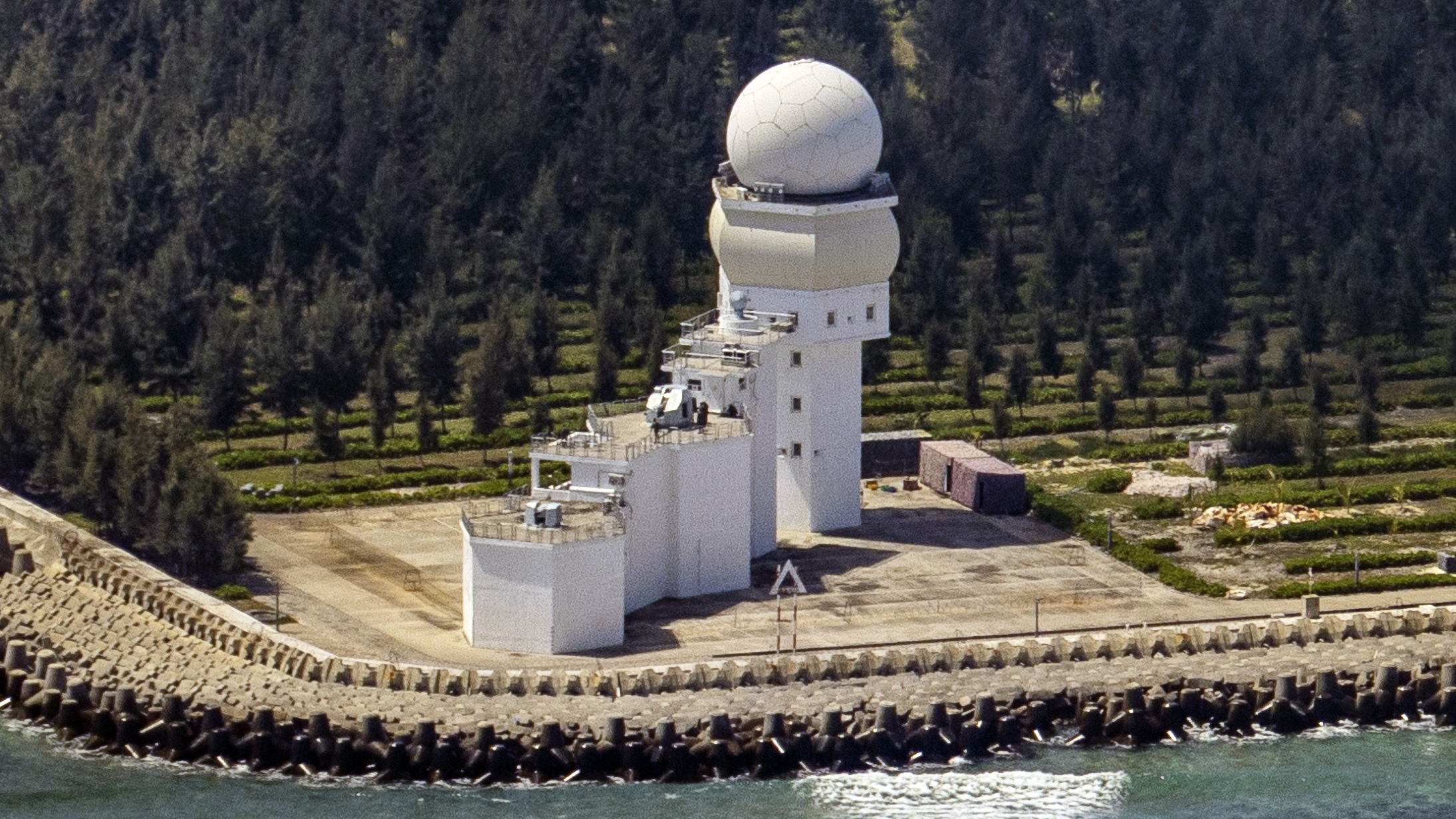
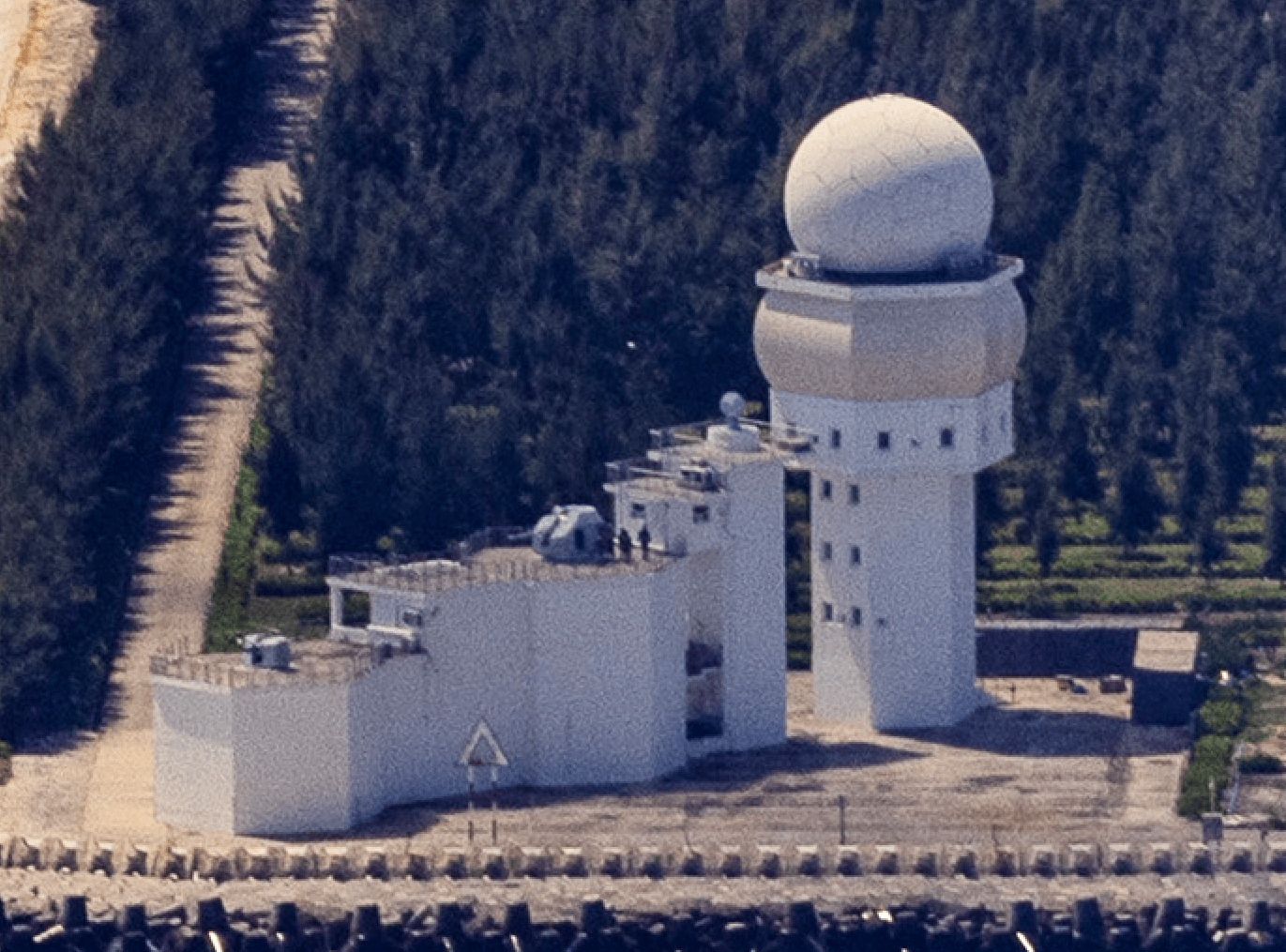
A similar setup is seen on another structure that does not feature the large dome on the other end of the small island.
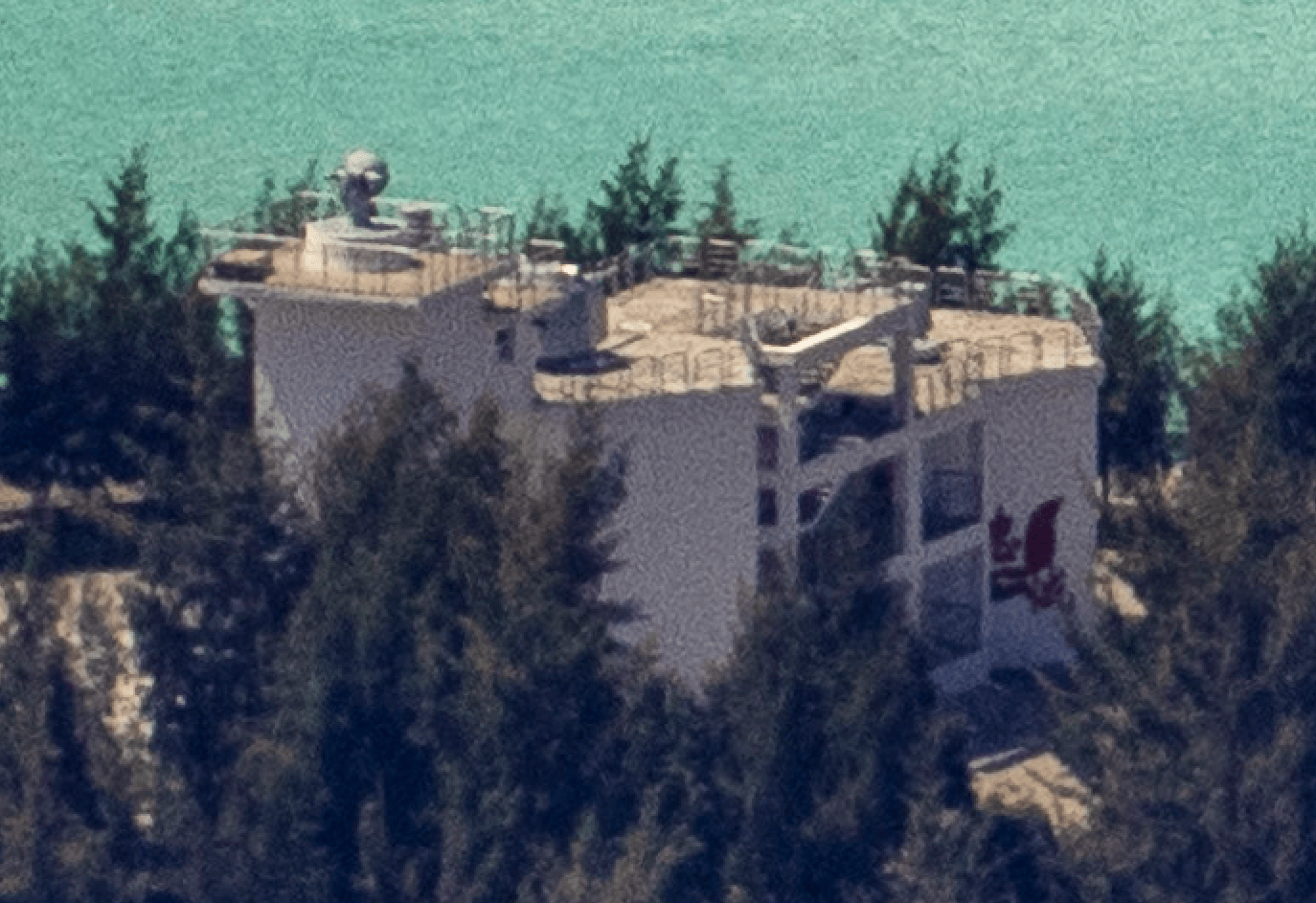
What could be a truck-mounted phased array radar is also visible, as are various objects covered with camouflage tarps. The main building is festooned with domes and antennae and also features deck-like extensions with some sort of systems mounted that are also covered. Tall antennas and lines connecting them dot the forested area.



A wider view shows all these features and a large helipad.

China has been arming its manufactured islands with weapon systems since not long after they took shape. As we pointed out in this previous piece, these close-in defensive weapons are installed on roughly 30-foot-wide platforms set atop clusters of hexagonal concrete towers, in some cases built near, or as part of, a larger radar system. These images are the best look we have gotten of these structures yet.
Several photos show the finished airfield on the island built out of Fiery Cross Reef. As seen in the image below, the runway is flanked by hangars and a large tower topped with a radome. Nearby is a field of what appear to be communications antennas and another assortment of domes. Across a harbor, another series of domed towers and a four-door garage-like structure on a concrete pad are seen. The exact use of these garages is unclear, but, as we have speculated before, they could be used to house, service, and rapidly deploy transporter-erector-launchers (TELs) used to fire surface-to-air, anti-ship, and/or surface-to-surface missiles.
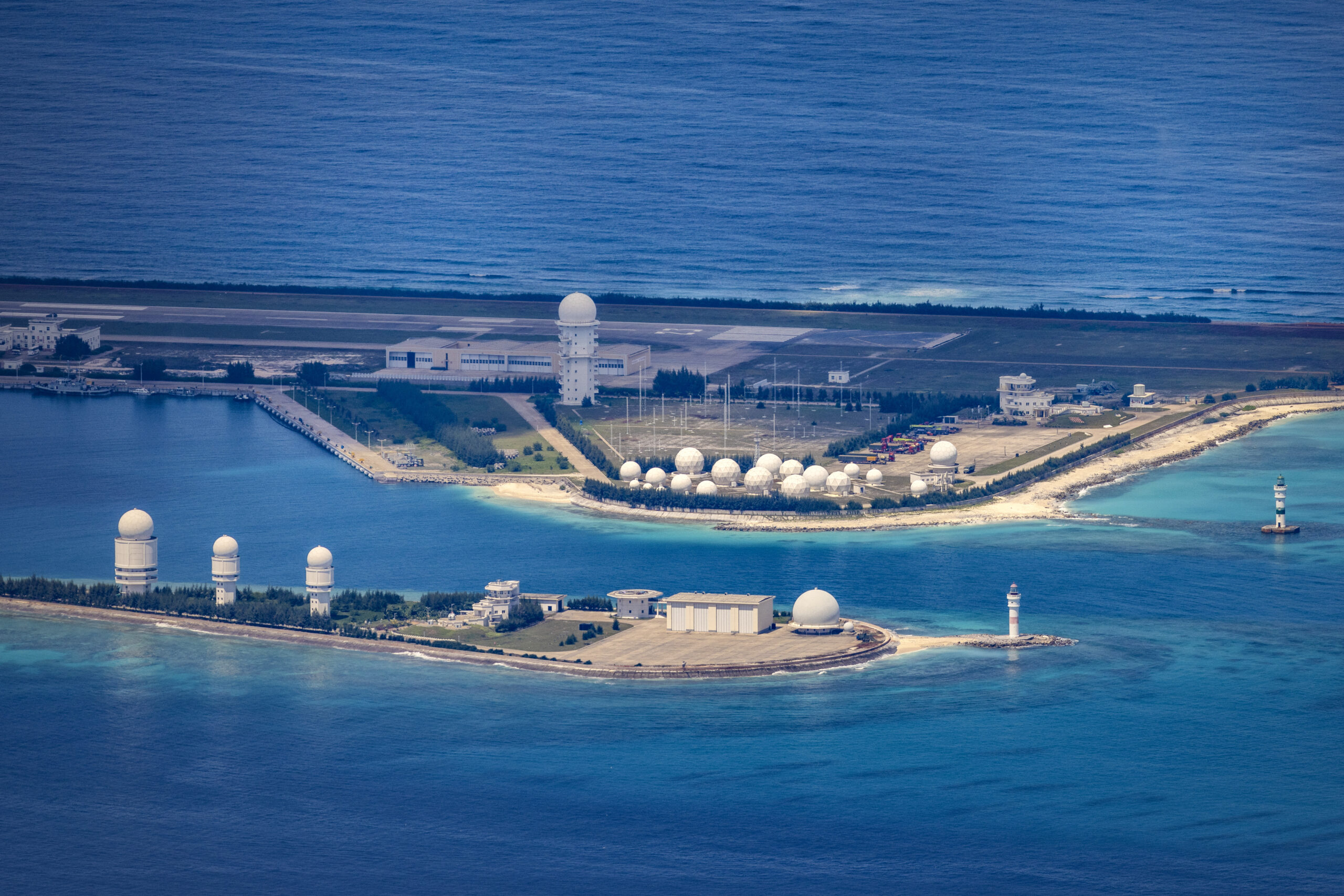
Another angle on the same island gives a closer look and the relative size and arrangement of additional domes. Various trucks and other systems are also seen.
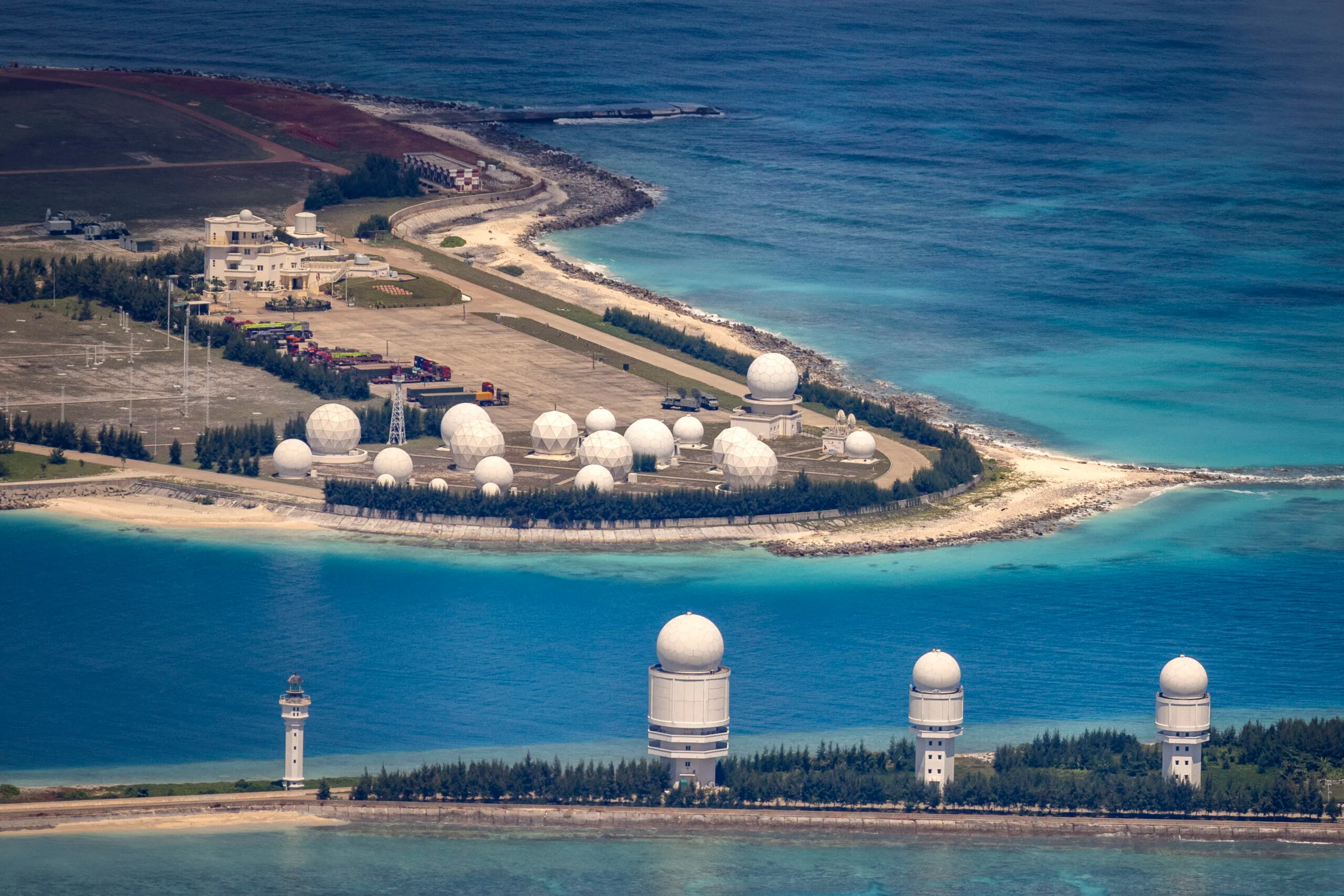
Two photos show one of the most built-up areas on Fiery Cross Reef. In them, a KJ-500 airborne early warning and control (AEW&C) aircraft is visible on the taxiway. These and other intelligence-gathering and submarine-hunting airframes frequently operate from the airfield there. You can also see examples of the much larger, multi-story hangars on the island. Along with residential and administrative buildings, Fiery Cross Island also includes a sports track and field, among other living quarters, recreational facilities, and administrative buildings. There is also a red-and-white lighthouse.

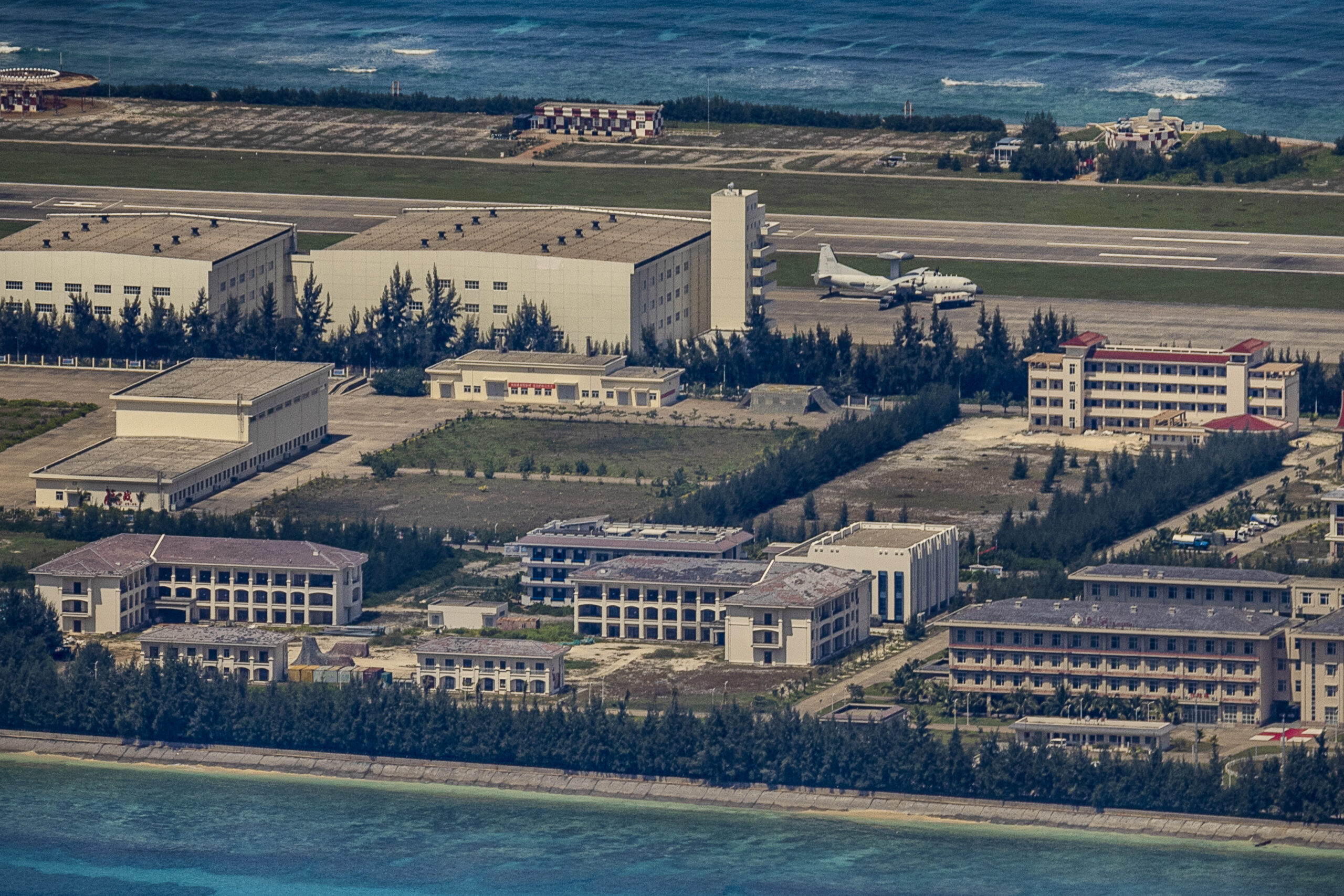
A closer look at the same facility shows the smaller hangars and what appears to be a medical landing pad, painted with a red cross. The smaller, more fighter-sized hangars can be seen here too, as well as the terminal building.

Another full-size runway and airfield are seen in great detail in the photo below of the artificial island on Mischief Reef. An aircraft can be seen inside the open hangar at the top of the image, but it is difficult to identify what type it may be. Something like a Y-9 or another four-engine turboprop aircraft is most likely what is in there. As with most of the photographs, there is little sign of activity on the ground at any of the installations. The images also give a good idea of just how large the airfield is. During a contingency operation, it could be loaded up with dozens of combat aircraft, from fighters to bombers.
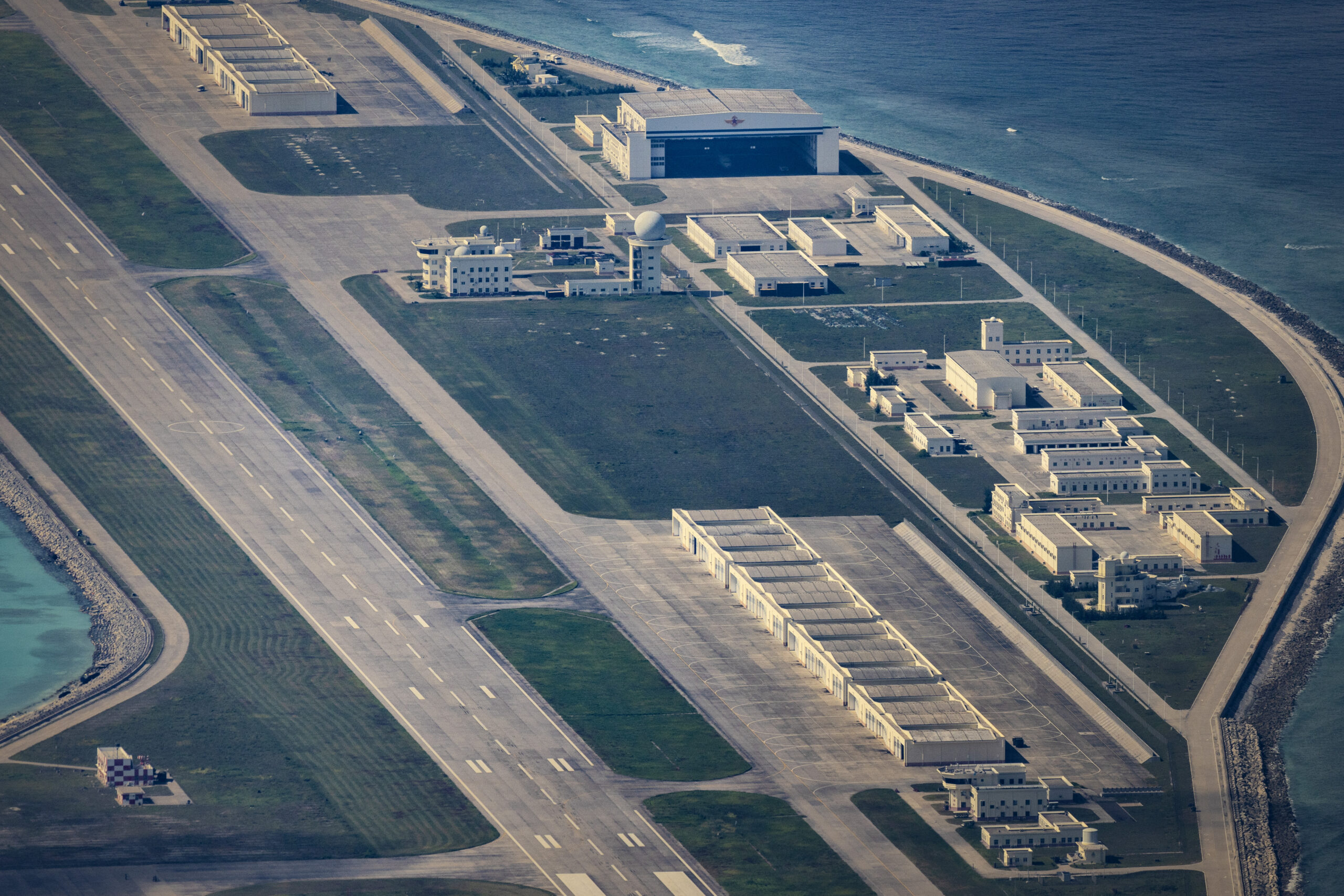

A wider-angle view of the same island shows a collection of building at the near end and another array of radome-topped towers at the far end. A large low-slung structure that is covered in grass is also seen in the distance. It is not clear what this would be used for, but weapons storage is one possibility. Beyond the towers, four aids to navigation mark the visibly deeper channel between the island and another section of the reef.


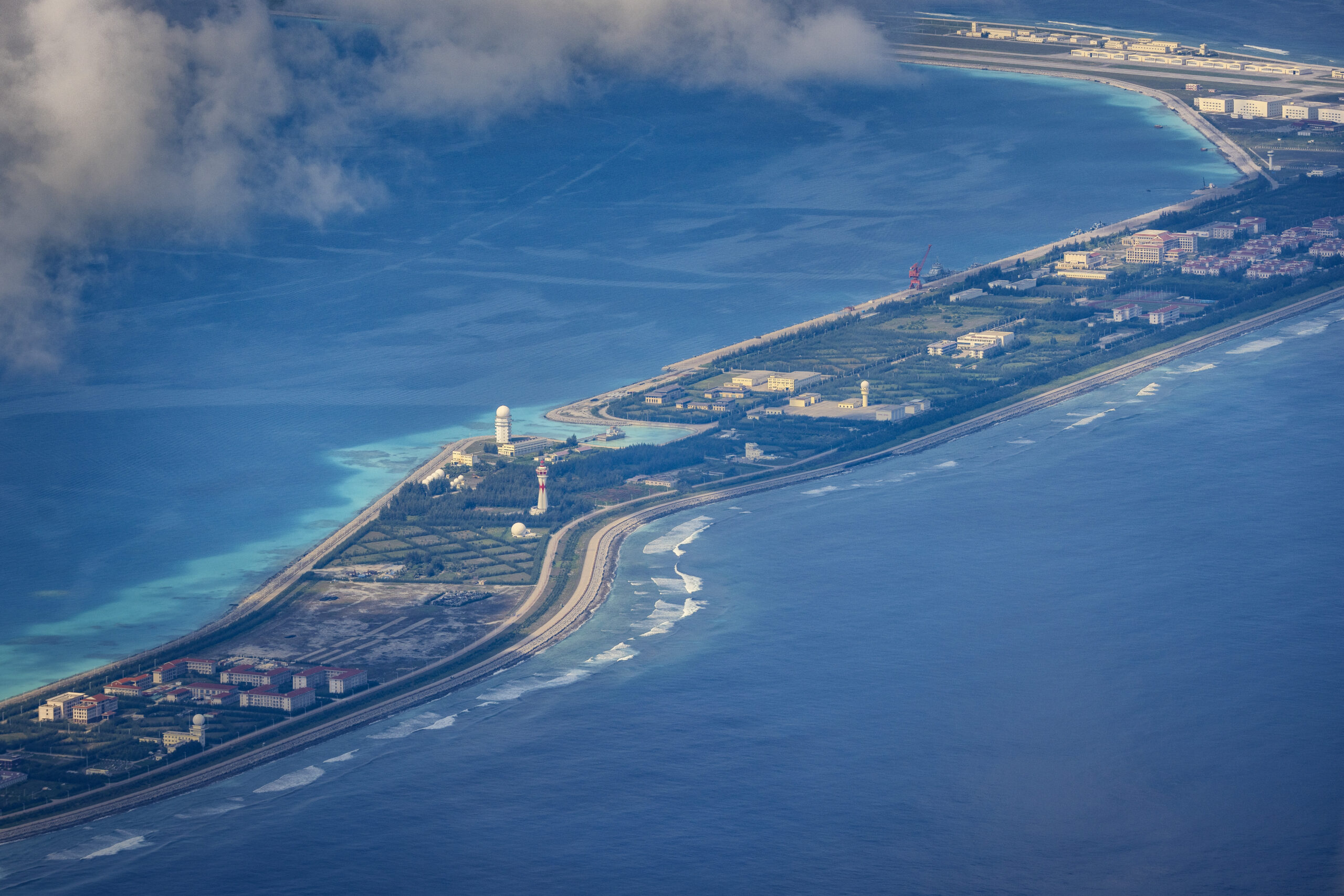

The picture of Mischief Reef above notably shows a pair of Type 022 Houbei class catamaran fast attack missile craft, readily recognizable by their distinct camouflage scheme. The first reports that the People’s Liberation Army Navy had deployed Type 022s to this outpost emerged last year. These boats are relatively small, but can carry up to eight YJ-83 subsonic anti-ship missiles, along with their bow-mounted 30mm H/PJ-13 Gatling-type guns.

The image below shows a relatively small artificial island on Hughes Reef, also in the Spratly Islands, with a large tower at one end, a narrow road and what appears to be a helicopter pad in the middle, and a multi-story building at the other end, complete with what looks like a large swimming pool. The main structure is very similar to the one on Cuarteron Reef with similar decks and roof elements. The large square pylons are of interest, although it is not clear what their purpose is or was.
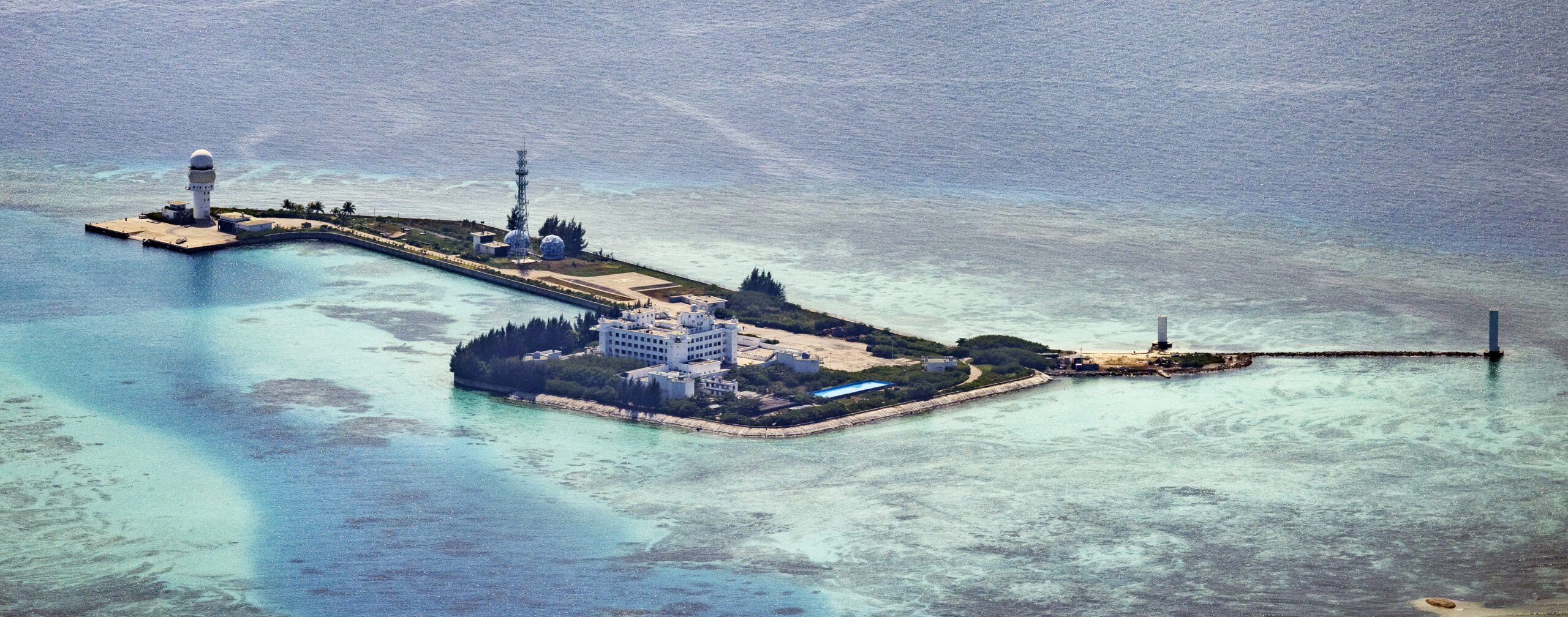
Another of the smaller man-made islands is on Gaven Reef. It features a very similar central structure, but it also has gun platforms extending from it sporting 76mm deck guns. A harbor area and a handful of large domes are also visible.
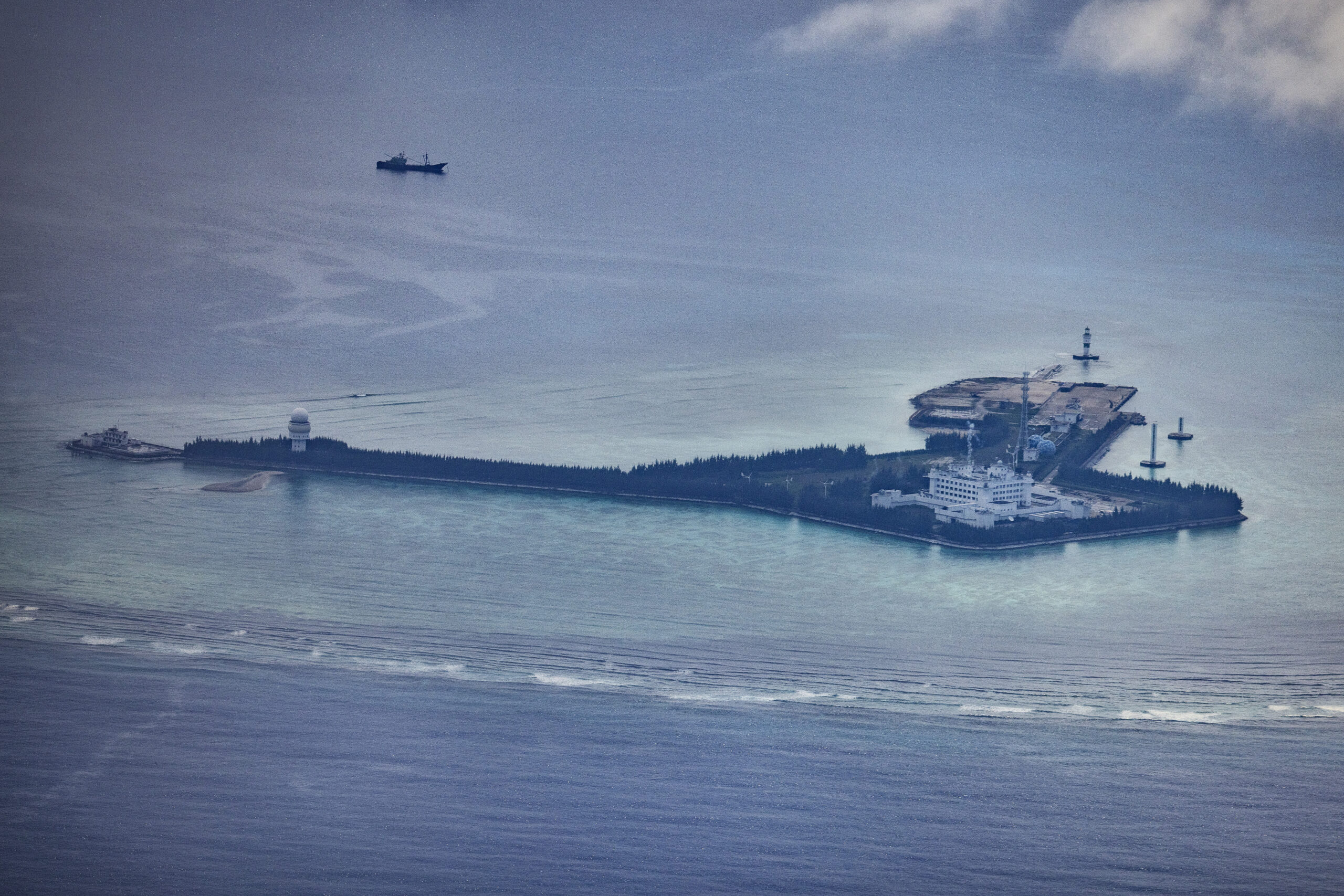
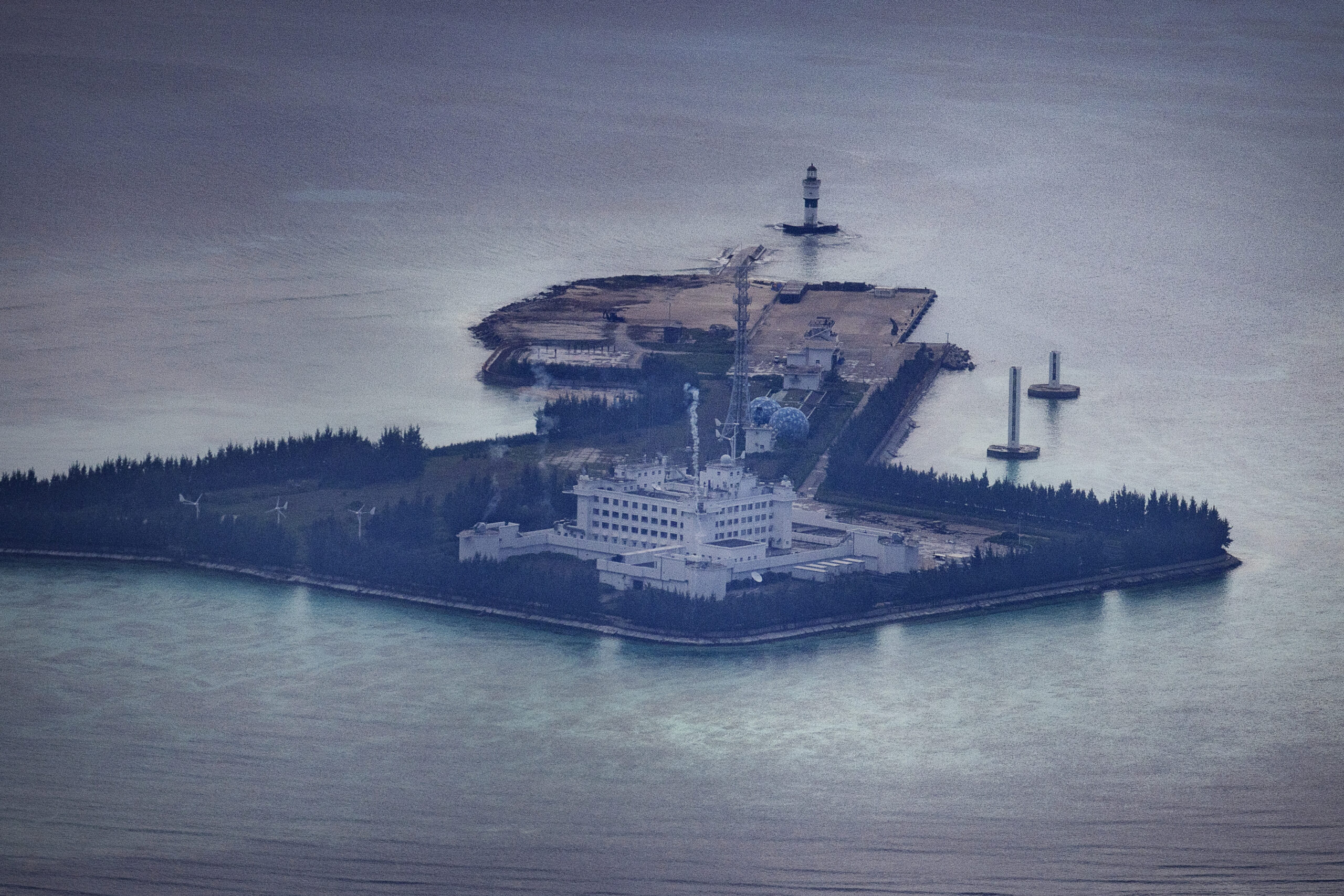
Port facilities are visible in the below photo of an artificial island built on Subi Reef. Much undeveloped ground and planted areas are among a large cluster of buildings. The island also features a tall, slender lighthouse at one end, another of the four-door garage-like facilities, and at least one radar dome similar to those seen on other islands.

Another angle of Subi Reef’s airfield shows the large number of hangars packed into the space, with the same smaller, fighter-sized ones set closer to the runway and the much larger, multi-story hangars set back. Also, note the vehicles seemingly blocking the runway. This could be a normal precaution when planes are nearby, in this case, the camera ship.
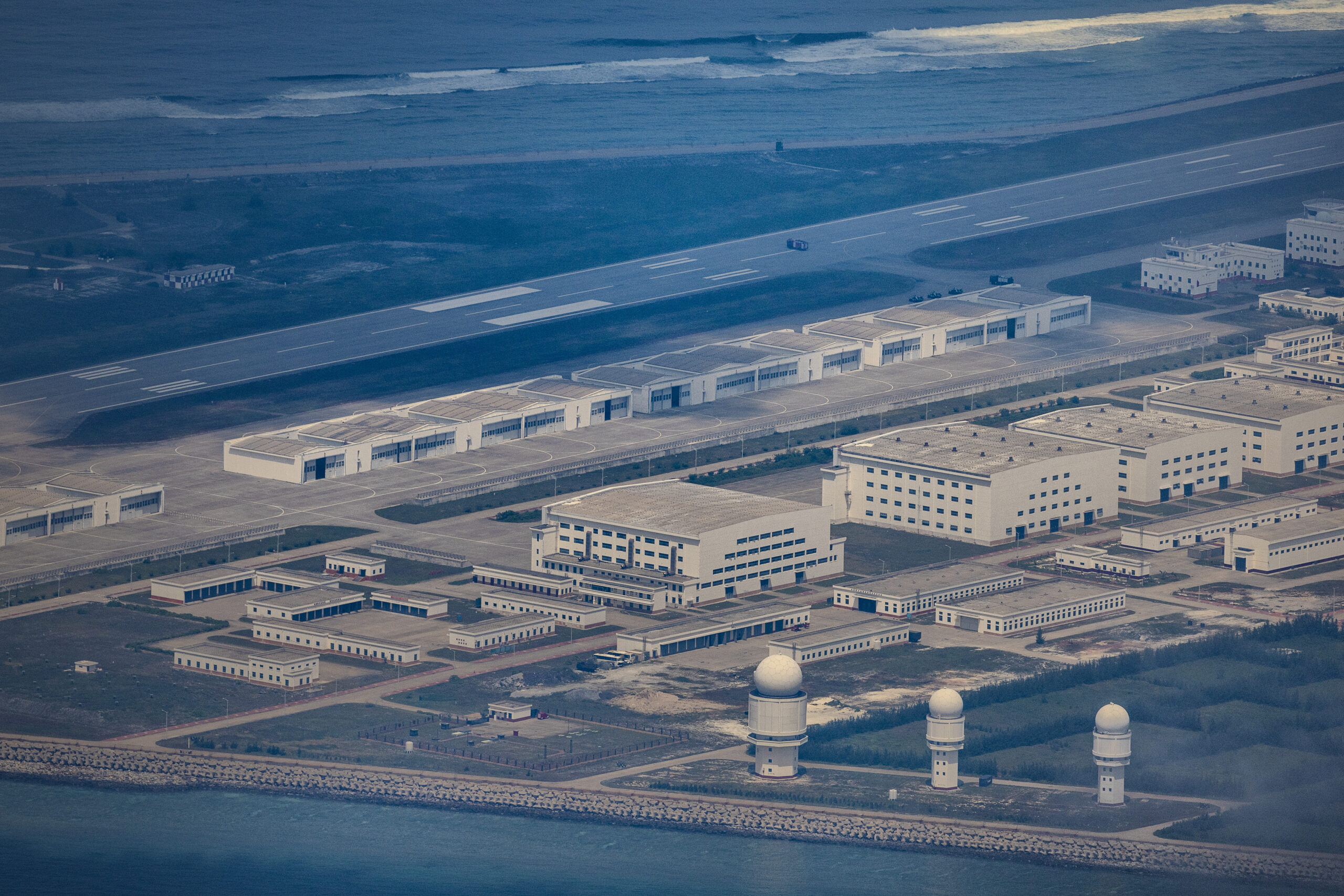

Another angle shows the extent of the support buildings and antennas farms.

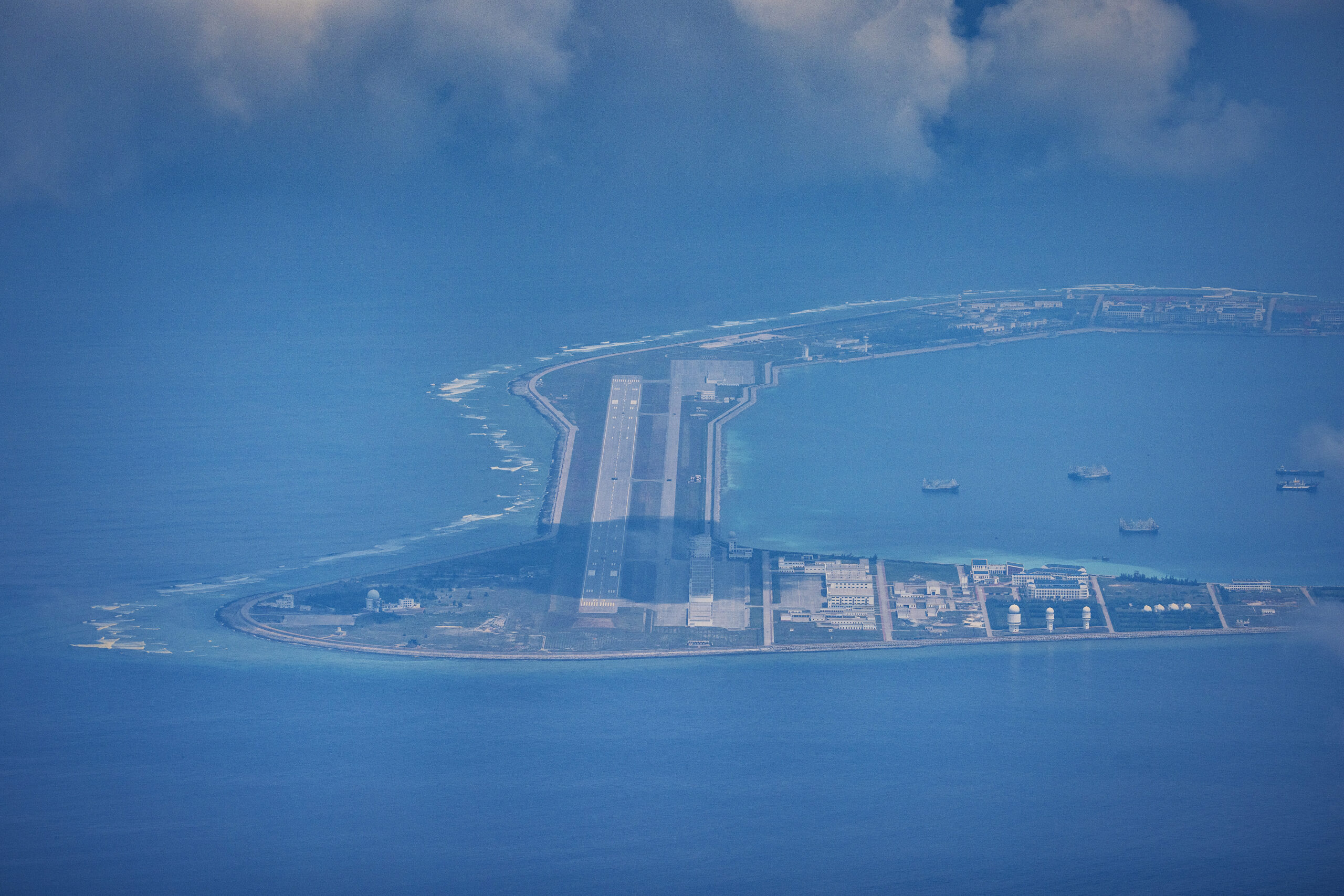
Beijing has aggressively asserted its claim to these and other disputed shoals in the South China Sea. By artificially expanding some existing islands, building new ones, and establishing a permanent military presence, China seeks to solidify these claims, regardless of what the international community or its neighbors think of them.
The reefs are strategically located between countries that contest China’s claim to the region and stake their own assertions on defensive and economic access. Malaysia, the Philippines, and Vietnam all have territorial claims to the areas in which China has built islands and planted its flag.
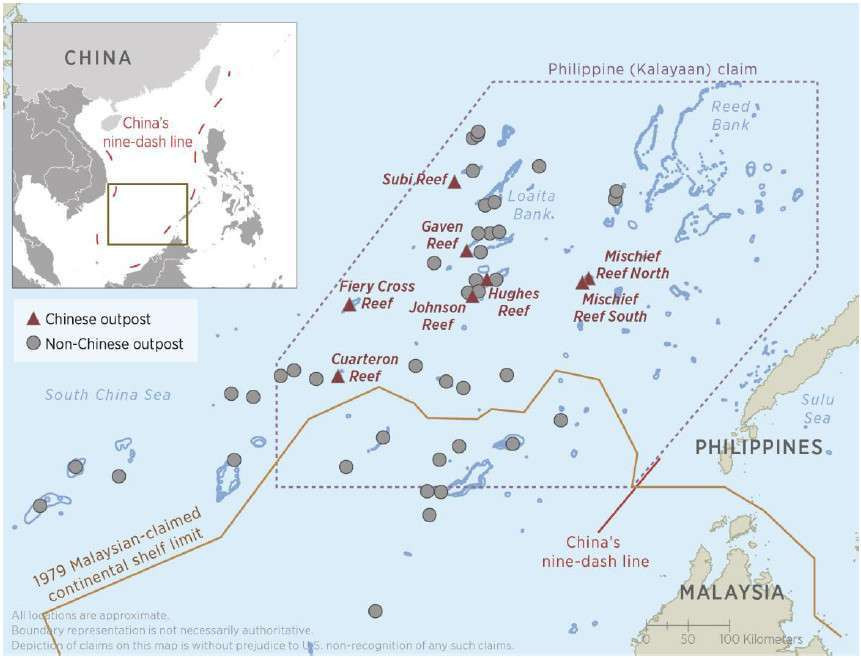
China has long sought to create a near-seamless anti-access/area-denial bubble covering almost the entire South China Sea. Building such extensive infrastructure on these manufactured spits of land is a key part of that plan. Aside from short-range weapons like the naval guns visible in these photos, China has deployed longer-range systems to some of these islands. Clearly, their infrastructure was designed to help conceal these mobile systems when not in use or not on high alert and they could pour in additional capabilities with little notice.
As outlined in the newly published National Defense Strategy, the U.S. military considers China the pacing threat as it contemplates potential future conflict. Each U.S. military service is preparing to operate across the vast distances of the Pacific as it challenges Chinese expansionism in the region. The U.S. Navy also takes responsibility for maintaining freedom of navigation through the contested South China Sea, often steaming carrier strike groups and other ships, along with those of allies and partner nations, through the area and within sight of Chinese naval vessels. This has led to some very tense maritime encounters.
With the complex installations seen on its archipelagos of artificial islands, China presents a solid deterrent to challengers of its claims and could rapidly shut down, or at least directly challenge, any movements through the region under threat of activating all its capabilities that can be deployed on and around its island outposts.
This is just a cursory review and analysis of these new images. We will add more details as need be as we take a closer look.
Contact the author: Tyler@thedrive.com and Dan@thewarzone.com
